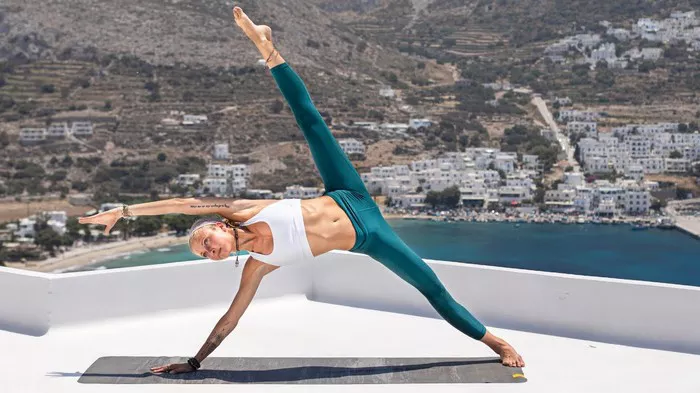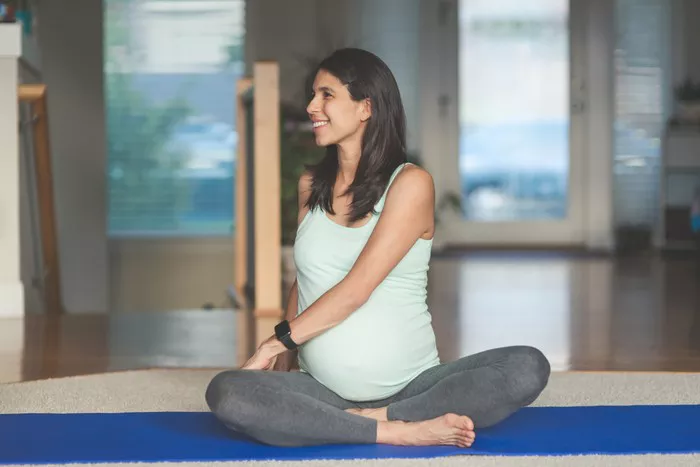In the kaleidoscope of yoga practices, Artistic Yoga emerges as a vibrant expression of physical, mental, and spiritual exploration. Unlike traditional forms of yoga that focus primarily on static postures (asanas) and breath control (pranayama) for health and spiritual growth, Artistic Yoga infuses creativity, expression, and fluidity into the practice. It transcends the boundaries of conventional yoga, inviting practitioners to delve into their inner landscapes, unlock creativity, and cultivate a deeper connection with themselves and the world around them.
Origins and Evolution
Artistic Yoga traces its roots back to the ancient art forms of dance and movement, which have been integral parts of various cultures throughout history. Drawing inspiration from these rich traditions, Bharat Thakur, an acclaimed yogi and painter from India, pioneered Artistic Yoga in the early 21st century. Influenced by his diverse background in yoga, martial arts, and contemporary dance, Thakur conceived Artistic Yoga as a holistic practice that seamlessly integrates dynamic movements, rhythmic sequences, and meditative elements.
Since its inception, Artistic Yoga has evolved organically, embracing influences from different yoga styles, dance forms, and artistic disciplines. Today, it encompasses a wide spectrum of practices, ranging from graceful flows and expressive movements to intense strength-building sequences and meditative reflections. This versatility allows practitioners to explore and personalize their yoga journey, adapting it to their unique needs, preferences, and aspirations.
Principles and Philosophies
At the heart of Artistic Yoga lies a profound philosophy that celebrates the union of body, mind, and spirit through creative expression. Unlike rigid systems that prescribe fixed sequences and techniques, Artistic Yoga encourages spontaneity, experimentation, and self-discovery. It invites practitioners to explore movement as a means of self-expression, using the body as a canvas to paint emotions, thoughts, and inner experiences.
Central to Artistic Yoga are principles of fluidity, rhythm, and harmony. Movements flow seamlessly from one to another, guided by the breath and intuition. Rhythmic patterns synchronize with the body’s natural rhythms, creating a meditative flow that transcends physical boundaries. Through mindful awareness and presence, practitioners cultivate a sense of harmony within themselves and with the surrounding environment, tapping into the universal energy that permeates all existence.
Practices and Techniques
Artistic Yoga encompasses a diverse range of practices and techniques, each offering unique benefits for body, mind, and spirit. While traditional asanas form the foundation of the practice, Artistic Yoga expands upon them, incorporating dynamic variations, creative transitions, and artistic elements. Here are some key practices and techniques commonly found in Artistic Yoga:
1. Creative Flows: Artistic Yoga sequences are characterized by fluid movements that seamlessly transition from one posture to another. Practitioners are encouraged to explore their range of motion, improvising and adapting the sequences to suit their individual needs and preferences. Creative flows may incorporate elements of dance, martial arts, and other movement disciplines, adding depth and variety to the practice.
2. Expressive Movements: In Artistic Yoga, the body becomes a medium for self-expression, allowing practitioners to convey emotions, thoughts, and inner experiences through movement. Expressive movements involve exploring different gestures, shapes, and dynamics, expressing the full spectrum of human expression—from joy and vitality to introspection and surrender.
3. Breathwork and Meditation: Breath awareness is integral to Artistic Yoga, serving as a bridge between the body and mind. Conscious breathing techniques, such as rhythmic breathing, deep diaphragmatic breathing, and alternate nostril breathing, help to calm the mind, increase energy levels, and enhance mental clarity. Meditation practices, including mindfulness meditation, visualization, and mantra repetition, deepen the inward journey, fostering self-awareness and spiritual growth.
4. Partner and Group Dynamics: Artistic Yoga offers opportunities for interpersonal connection and collaboration through partner and group dynamics. Partner yoga involves practicing with a partner, supporting each other in poses, and exploring synchronized movements. Group sessions create a sense of community and shared energy, fostering a supportive environment for growth and exploration.
Benefits and Impact
The practice of Artistic Yoga offers a multitude of benefits for holistic well-being, encompassing physical health, mental clarity, emotional balance, and spiritual growth. Some of the key benefits include:
1. Enhanced Flexibility and Strength: The dynamic movements and fluid transitions of Artistic Yoga improve flexibility, strength, and endurance, promoting overall physical health and vitality. Regular practice helps to release tension, improve posture, and increase mobility, reducing the risk of injuries and enhancing athletic performance.
2. Stress Reduction and Relaxation: Artistic Yoga provides a sanctuary for relaxation and rejuvenation, offering a reprieve from the stresses and demands of daily life. Mindful movement, breathwork, and meditation techniques promote relaxation response, calming the nervous system, and reducing levels of stress hormones such as cortisol. As a result, practitioners experience greater emotional resilience, mental clarity, and inner peace.
3. Creative Expression and Self-Discovery: Artistic Yoga serves as a creative outlet for self-expression and exploration, allowing practitioners to tap into their inner creativity and authenticity. Through movement, gesture, and breath, individuals express their unique identities, emotions, and experiences, fostering a deeper sense of self-awareness and empowerment.
4. Mind-Body Integration and Balance: Artistic Yoga facilitates a harmonious integration of body, mind, and spirit, fostering a sense of wholeness and balance. By synchronizing movement with breath and cultivating mindful awareness, practitioners develop a deeper connection with their bodies, thoughts, and emotions, aligning with their innate wisdom and inner guidance.
5. Community and Connection: Artistic Yoga creates opportunities for connection and camaraderie, fostering a sense of belonging and support within a community of like-minded individuals. Whether practicing solo, with a partner, or in a group setting, practitioners share a common journey of self-discovery and growth, inspiring and uplifting each other along the way.
Conclusion
In the ever-evolving landscape of yoga, Artistic Yoga stands out as a dynamic and transformative practice that celebrates the beauty of movement, creativity, and self-expression. Rooted in ancient wisdom and infused with modern innovation, Artistic Yoga offers a holistic approach to health and well-being, inviting practitioners to explore the depths of their inner selves and unleash their innate potential. As we journey through the fluid landscapes of body, mind, and spirit, Artistic Yoga serves as a guiding light, illuminating the path to self-discovery, harmony, and wholeness.





















